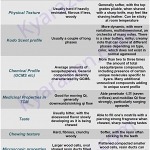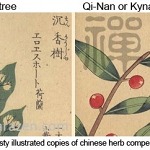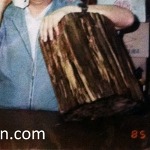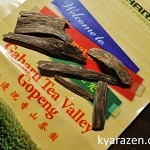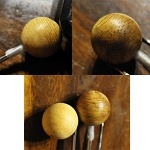oops! long overdue articles as usual. beeen reallly really busy studying and researching on tea pots and making incense sticks but i’ve not forgotten about writing.
Sometimes, when people handle agarwood, they are seen pouring over the piece of wood with a handheld magnifier.
What are they actually looking for?…
Here are some tips.
By looking at the magnified areas of agarwood, you can quickly determine the sites of infection and the quality of resination.
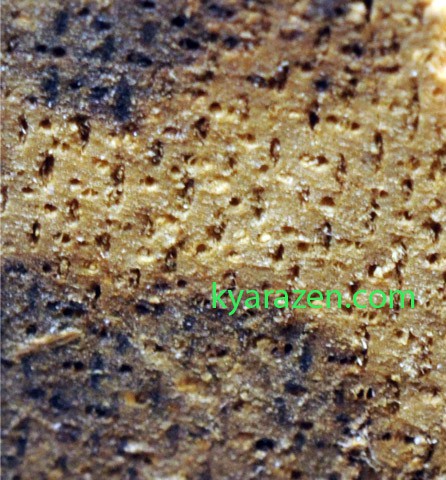
In this picture you can see that the top and bottom are well resinated, whilst the centre is fibrous and yellow in color. The centre area can be rather “oil” rich, which is good for distillation, whilst the dark regions can be incense/monkoh grade, especially the zone at the bottom. Why?
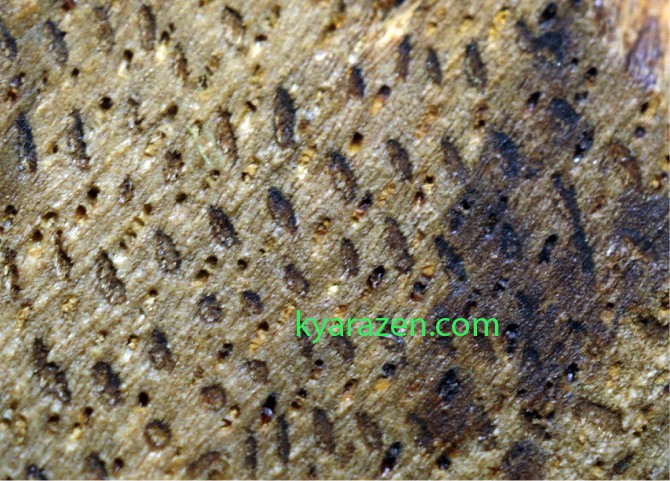
Being Mon-koh grade, or simply to select a really nice agarwood for heating, or even distillation, you have to notice two species of ducts here. Do you see the oil ducts here that are orange in color? And the resin ducts that are dark brown and filled with resin?
This wood has both well filled oil ducts and resin ducts, and as such would present a more complex and complete olfactory profile when heated. This will also be good for distillation.
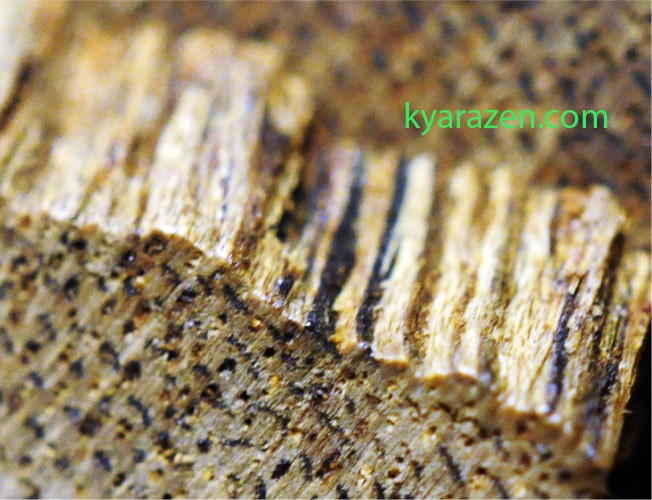
There is a misconception that golden streaks means “kynam” or “kyara” or “whatever colored-oil” kyara etc. Golden streaks are simply just OIL ducts filled with oil. This is part and parcel of the plant’s defence process. This oil is secreted to fight the infection and bugs, and over time, it gets transported to the resin duct where it matures into resin. Agarwood trees DO not secrete resin like pine trees.
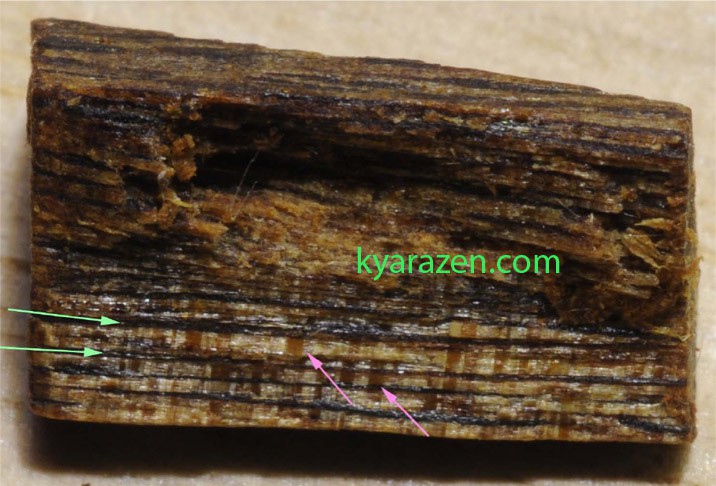
This oil transfer from oil duct to resin ducts, or from resin ducts to resin ducts (excess oil), occurs via rays that you can see indicated by the pink arrow in the picture above..
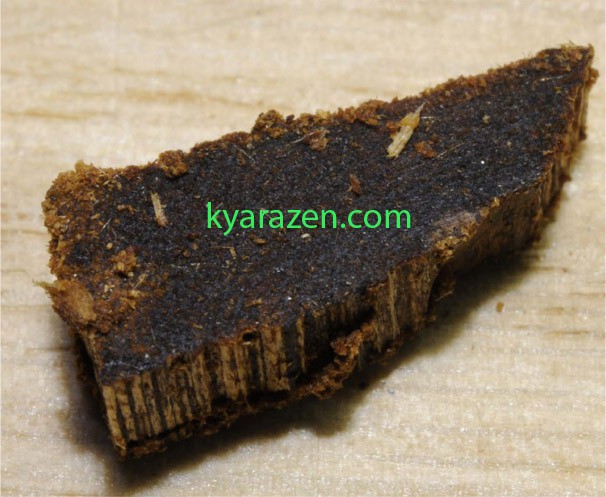
Occasionally it is possible to come by materials that have almost no fibre left….
